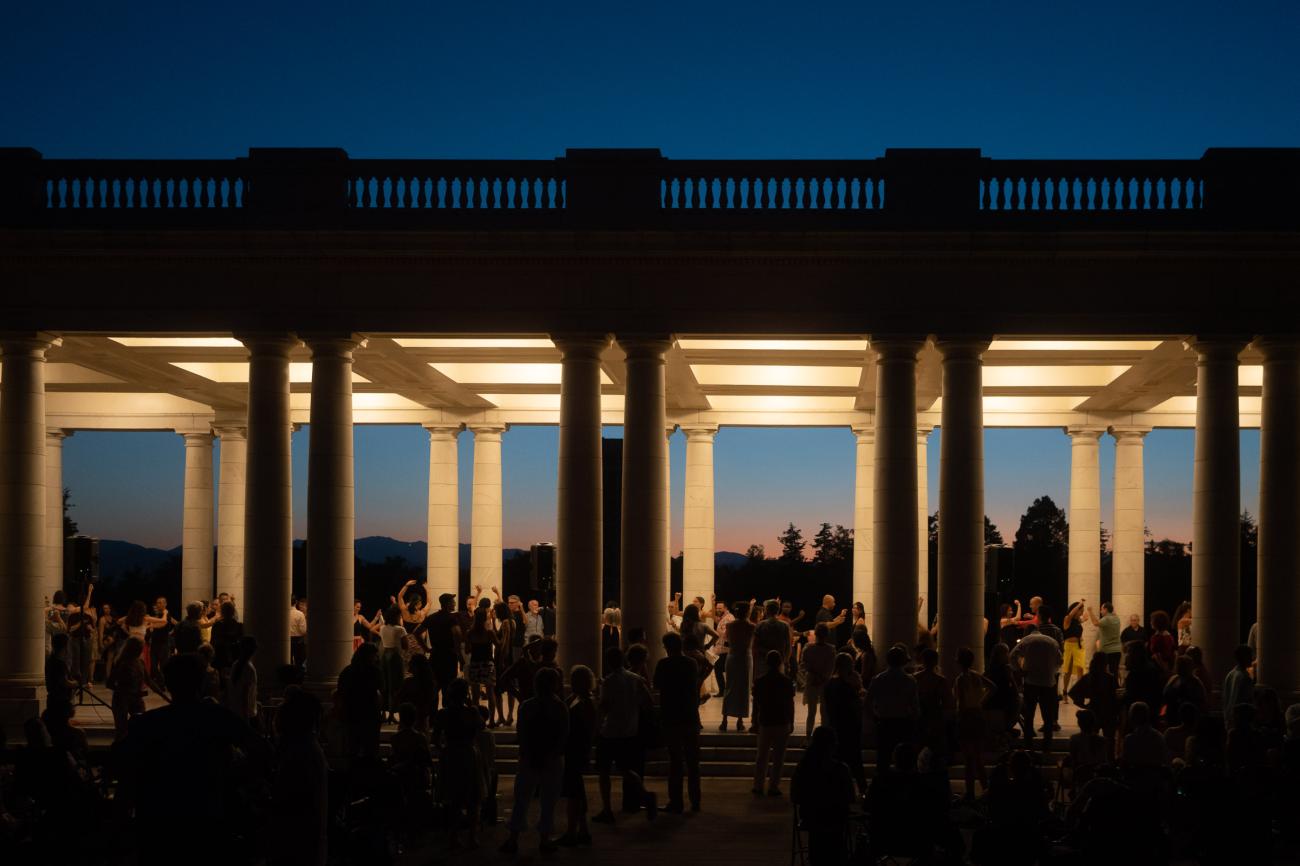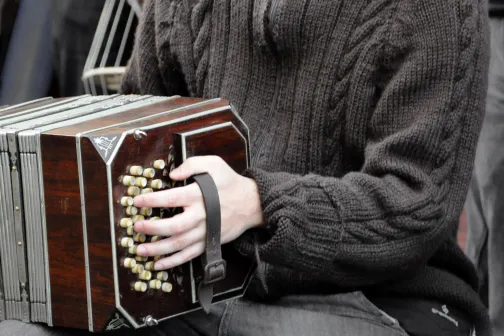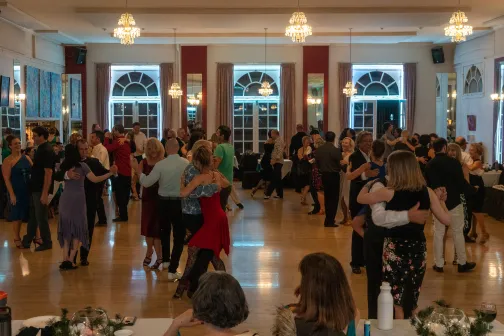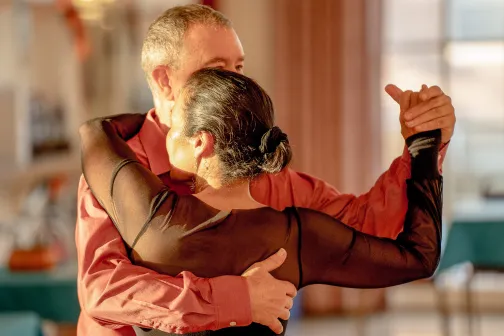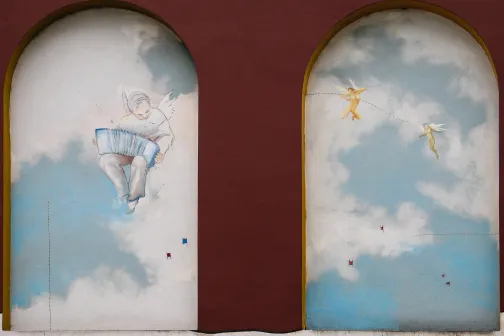A social Argentine Tango dance is called a milonga, which in Argentina means a "dance party". This is a place to see and be seen, and a place to meet other tango dancers, many of whom have spent months and years perfecting their steps. It is not a place for beginners to learn how to dance; on the other hand there is something mesmerizing about the way a crowded dance floor moves together with never a bump between the dancers.
One typical observation is that the dancers look so serious. This is actually a sign of transcendent, inner joy, or at least an indication of the concentration necessary to lead and follow smoothly and intuitively. Tango is intricate, but also playful. One of my favorite teachers, Brigitta Winkler says "Argentine Tango is a playground for adults".
Line of Dance and "Rules of the Road"
The milonga is set up to present the dance floor as a "stage". Tables surround the floor so everybody has a "home" place to sit, from where they can watch the dancers and look around for someone to dance with. In order to avoid collisions, Social Tango Dancers respect the CCW line of dance. More than that, they dance in "lanes", starting at the outside of the floor. If the outside lane gets filled, they add a second lane about three feet inside, and so on. Just like merging on a highway, it is best to wait for a gap in traffic rather than leaping in front of another couple. It is useful to catch the eye of the on-coming leader, who will usually slow down to open a space. On the dance floor, each couple moves slowly forward, neither leaving a big gap, nor crowding the couple in front. In a crowded situation, you have to navigate carefully without stepping on the person behind you. Rock-steps, turns and semi-turns entertain the follower while the leader waits for traffic to clear.
Print out this PDF printout on floor-craft. It illustrates the etiquette and culture of navigating at a traditional milonga.
The "Cabeceo" or, How to Get a Dance
A particularly charming aspect of tango is that the women get to ask the men to dance by looking for their desired partner, and nodding her head to accept. Across a crowded room, this feels electrifying! He has accepted my glance; She has chosen ME to dance with! Now, the man can saunter confidently across the floor, knowing that as he approaches, the woman will rise from her seat, and let me take her hand for a dance. Contrast that with the situation at a typical Country Western bar: The man screws up his courage to walk up to the lady's table and puts his hand in her face. If she doesn't really want to dance with him, she is now on the spot, forced to either shoot him down or give him a "mercy dance". In tango, I always know that if she has accepted me from across the room, it is because she wants to dance with me.
After the Dance Set
At a milonga, the DJ typically plays 3 or 4 songs of the same genre: tango, waltz or milonga (the dance), and then plays a "cortina" or curtain of non-danceable music which allows everybody time to return to their seats. If the man has given the woman a really good set of dances, she is in a meditative state. Her eyes may have been closed, and she may not remember where her seat was. A beautiful courtesy is for the man to walk her back to her seat.
Codes, not Rules
It needs to be emphasized that these are codes and customs not rules. There is no referee handing out yellow cards to violators, even if some might wish we had a milonga cop. Also, a house party is different from a more formal milonga or a more casual practice. One very strong rule however, is the following:
NO TEACHING ON THE DANCE FLOOR
Nobody likes to be told they are making a mistake. Even if you are "trying to be helpful", it ALWAYS comes across as criticism. He might be saying, "You're supposed to cross". She might be thinking "If you had led the cross, I would have crossed." Men, don't help the women. Lead masterfully. If she doesn't know the cross, give her the most beautiful dance she has ever had without the cross. Ladies, don't tell the man what to do next. Leaders have a lot going on with navigation, planning, listening to the music. They can only hold one or two thoughts at a time, and if you speak to them, they immediately lose their navigation ability.
